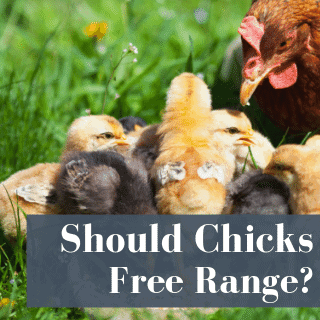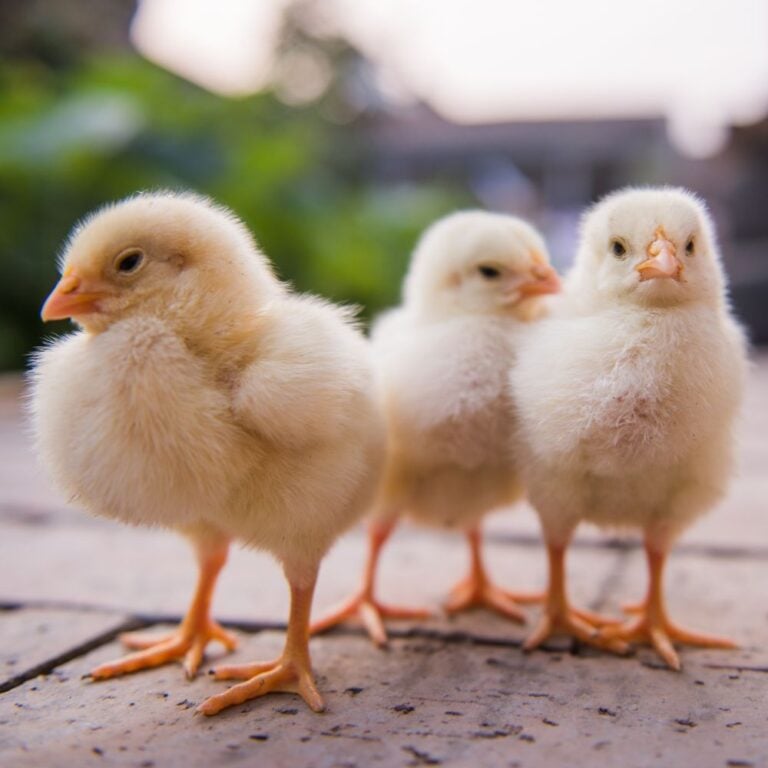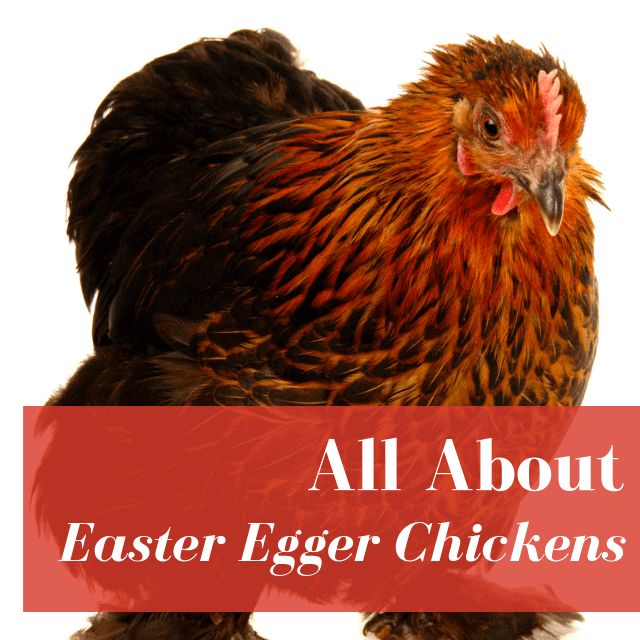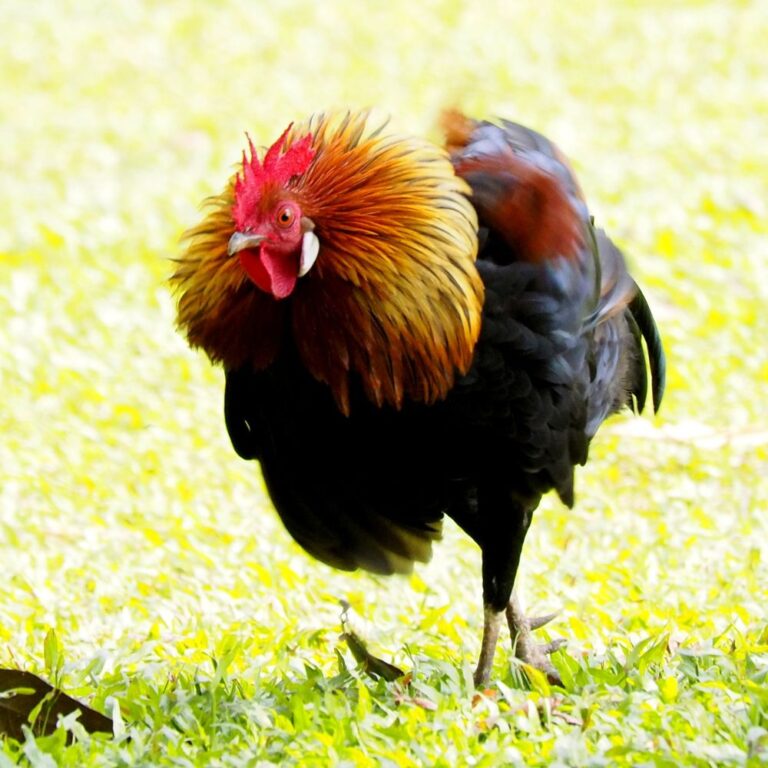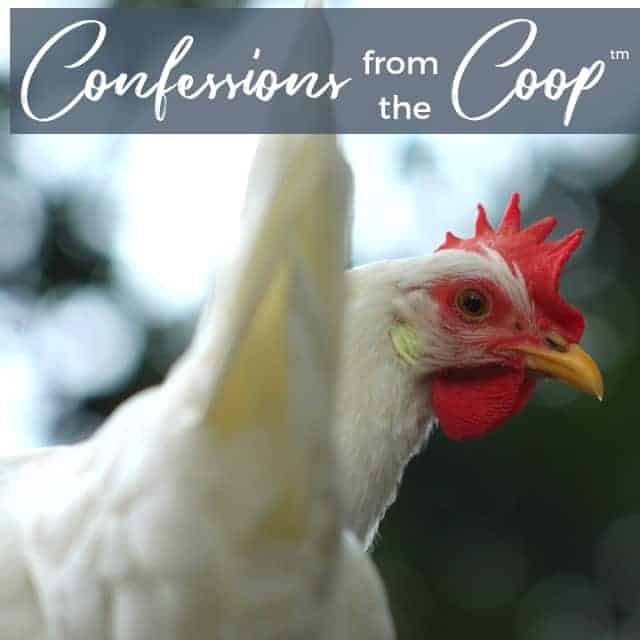Thinking of buying Frizzle chickens? Here’s everything you need to know about these unique birds, and the best places to buy them!
Looking back at the first time I ever learned about frizzle chickens, I remember I was REALLY excited to add these crazy-looking creatures to my flock!
I finally did, but learning about this particular breed has been a lesson in math. And I’m not referring to the typical “chicken math” we all joke about.
If we follow the simplest math equation of 2 or 3 hens in the same backyard, then you’ll likely get eggs. Put a rooster into the same coop, and then there will probably be chicks.
Math and chickens really shouldn’t extend beyond that, but where Frizzle chickens are concerned, math becomes a far more important part of the equation than we might think!
Today, we’re going to delve into just what makes a Frizzle so frizzley (Frizzle math). We’re also going to be sure that we don’t let them Frazzle (because it is a thing!), and in the process, we’ll look at some other important details about this special chicken breed.
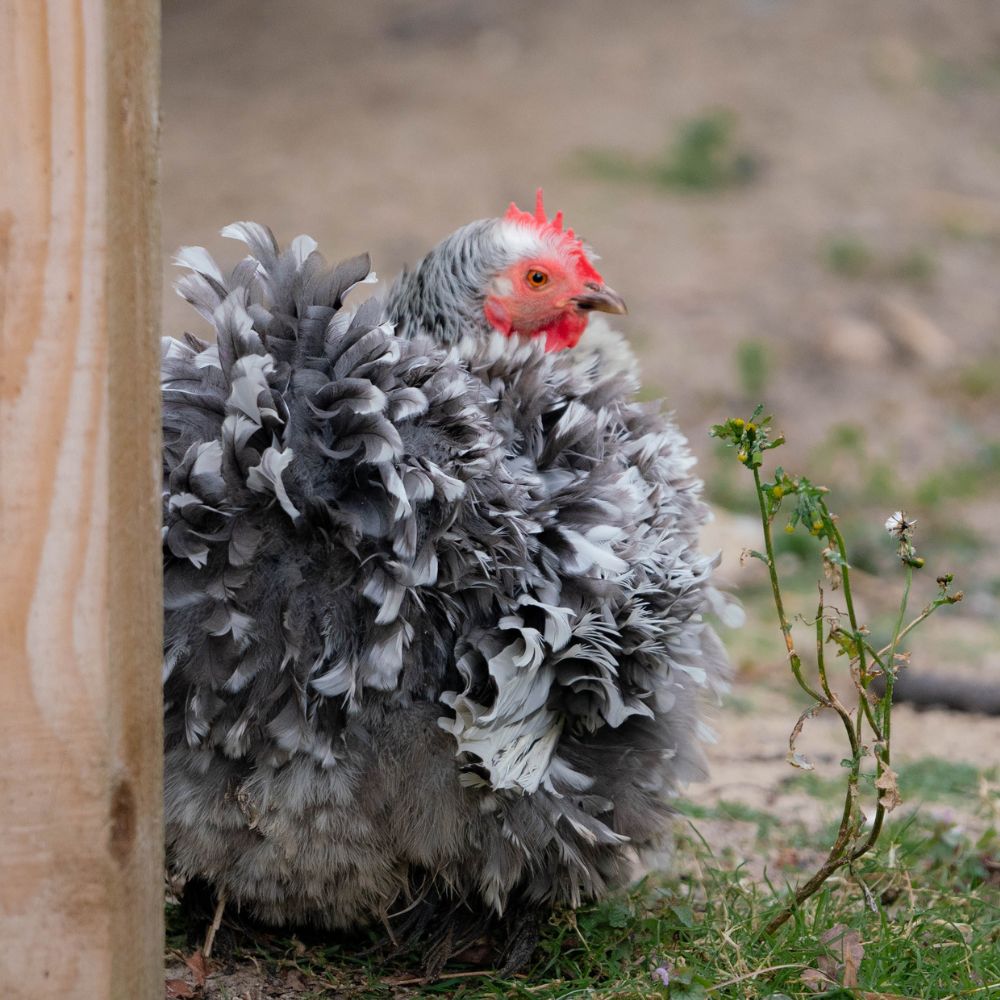
Table of Contents (Quickly Jump To Information)
What is a Frizzle Chicken?
Perhaps the most important thing to consider when discussing Frizzle chickens is the fact that the Frizzle isn’t one particular chicken breed.
Instead, it is the result of careful or selective breeding and a whole lot of patience. The defining feature is the curly feathers which makes these chickens reminiscent of a feather duster with a beak!
They are very striking in appearance, but Frizzles take their genetic and shape cues from their originating breed (such as cochins or silkies).
If, for example, you breed a Jersey Giant chicken with Frizzle genetics, it would big a big floofy critter with all the size and mass of the Jersey Giant (not that it is a very common occurrence.) Indeed, it appears to be a purely speculative breed. But this would hold true in theory!
Just as with their baseline variety, Frizzle chickens can come in a wide variety of colors ranging from black, blue, buff, white Columbian like the Wyandotte, duckwing, black-red, brown-red, cuckoo, pyle, spangle as in the Old English Game and red as in Rhode Island Red.
Temperament is another area that Frizzle chickens are generally pretty consistent with. They are friendly and lovable birds that are delightful to have in any backyard flock.
What is Frizzling?
Frizzling is what happens when a chicken feather curls upwards and outwards from the body. It’s a mutation resulting in imbalances in the genetic pool.
Most chicken feathers lay flat against the body, but frizzling is special. It creates a very distinct-looking bird that some say resembles a Muppet.
It’s the result of an “mf” gene which, if present, will result in your chick taking on either a normal-feathered chick or one that sports that “Frizzle look”. Keeping track of which chicks have the gene is a very important task. It is only through the mating of a Frizzle with normal-feathered fowl that results in the Frizzles that you are looking for.
And herein lies the math that is so important (keeping really good records is a must!)
The outcome of the matings can result in three distinct varieties of chicken. Two of which are wonderful and a delight, but the last of which… well, that’s something that is best avoided. If you mate one Frizzle with another Frizzle, there is a 25% chance that the result will be something called a Frazzle.
Frazzles are almost too delicate for their own good. Their feathers are almost brittle to the touch. Frazzle chickens often suffer bald spots where the feathers have broken away. This is not good because feathers play an important part in maintaining body temperature!
For these and other reasons, such as an enlarged heart and other physical issues that often prevent Frazzles from living to maturity, Frazzles are best avoided.
When I first started researching Frizzle chickens, I spoke with various breeders who have experience breeding these unique birds. My friend Katie at Itty Bitty Chicken Farm in South Carolina told me it’s very critical to only mate a normal feathered chicken with a Frizzle (and to avoid a Frizzle/Frizzle mating at all costs.)
If you decide you want to hatch Frizzle chicks, here’s the chicken math you need to know:
- Normal x frizzle = 50% frizzle, 50% normal
- Frizzle x frizzle = 50% frizzle, 25% normal, 25% frazzle
While the science isn’t overly complex, good note-taking and controlled breeding are important to ensure all your chicks get the chance to live healthy lives.
Luckily, the genetic chance of getting a Frazzle isn’t too hard to remember. What’s most important is exercising care and caution with your birds, so that the Frizzles you’re looking for are the best quality bird that you can develop.
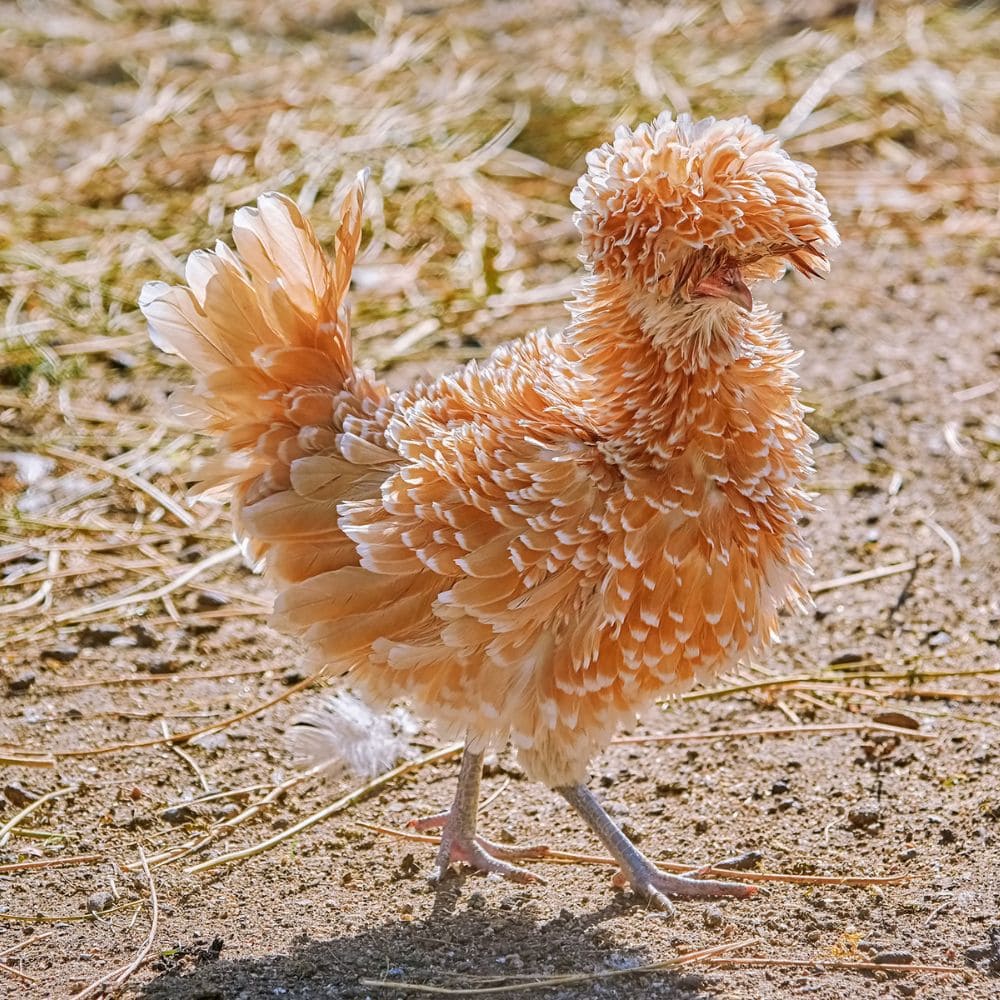
What Chicken Breeds Have Frizzles?
Common Frizzle bantam breeds:
- Cochins
- Silkies
- Orpingtons (Buff, Lavender, etc)
- Plymouth Rocks
- Japanese Bantams
- Polish Bantams
Cochin
Cochin chickens are one of the most popular breeds among beginners because they’re hardy, lay brown eggs consistently, and enjoy human company.
Both the full-sized cochin and the bantam variety have been known to produce Frizzle variations. The standard-sized cochins have big and beautiful bodies that can weigh about 5 pounds and have an abundance of fancy soft feathers.
They are gentle giants that are easy to handle, and this temperament makes them great pets for families while also making them great foster moms for hatching and brooding. The bantam variety weighs about 2 pounds, and is exceptionally friendly.
They are common in black, white, and red varieties. You can read more about cochins here.
Plymouth Rock
A dual-purpose bird that is one of America’s oldest chicken breeds, the Plymouth Rock is an excellent egg layer.
This breed also has a distinct black and white bar plumage, which is a beautiful addition to any Frizzle flock. Both roosters and hens are generally calm, and these birds get along well with everyone.
The roosters are good protectors for their flocks, and aren’t aggressive towards people. They’re curious and generally will prefer to free range and find morsels in the yard, they also tolerate confinement well.
They come in the standard colors: Barred, Blue, Buff, Colombian, Partridge, Silver Penciled, and White. You can read more about Plymouth Rock chickens here.
Silkies
Silkies are a special, fully-bantam variety of chicken that are almost perfect for a Frizzle. Their legs are completely covered in feathers. So if you get one of these Frizzled up, you’ll have a feathery friend whose unique curvy feathers stretch from toe to top! Adorable indeed!
With their super-soft plumage and easy-going temperaments, these beauties make for wonderful pets. Other details that make these birds such oddities (as far as other chickens are concerned) are their black skin and bones, blue earlobes, and feet with five toes each.
If you don’t want to have your Silkies lounge about as just pets, you should know they can average at about 150 eggs a year. This makes for a sizeable contribution to the pantry.
They come in black, blue, buff, white, partridge, splash and gray varieties. You can read more about silkie chickens here.
Japanese Bantam
Japanese bantams are known in some parts of the world by another name: Chabo. Whatever their name, they got their start in the Land of the Rising Sun, and are a true bantam breed.
These birds are distinctive for their upright tails that often stick up higher than the peaks of their combs! These beautiful birds are mostly decorative, as their small stature isn’t ideal for meals. And they only produce about 75 eggs per year.
These fuzzy babies are born to strut the catwalk!
Japanese Bantam Frizzles come in all the standard colors: black-tailed white, black, mottled, black-tailed buff, and gray. You can read more about bantams here.
Polish Bantams
Another show bird is the Polish Bantam. These sweet birds were originally developed as egg-raisers who can produce a solid 200 eggs each year! However, their primary function soon went to the wayside because of their telltale crest of curly feathers that engulf their heads.
These crests have made them distinctive enough for chicken lovers around the world to covet them for their visual appeal. They are sweet chickens whose unique qualities make them ideally suited for a Frizzley offspring. They can be quirky or flighty owing to poor vision resulting from their crests.
The colors for the Polish Bantam Frizzle run the whole list, and as it is a show bird, the list is vast: white crested black, golden, silver, white, buff laced, white-crested blue. And then there are also the bearded and non-bearded varieties as well as the unrecognized varieties, too!
You can read more about Polish bantams here.
Orpingtons
Originating in the UK, the Orpington is the quintessential chicken breed whose round body and distinctive buff coloring is often envisioned when one thinks of chickens.
These chickens are hardy and rugged and are ideal for confinement or small yards (like are most common on the small islands of Great Britain). These birds are consistent egg-layers, grow rapidly, and make for a tasty 2 to 3 pound bird.
Although there have been sightings of all varieties of Orpington Frizzles (including black, blue, white, and the unrecognized splash and lavender), the buff variety is by far the most common.
You can read more about Orpington chickens here.
Is it a Frizzle Rooster or Hen?
So, how do you tell the males and females apart? Just like other chickens, there are some easy and not-so-easy ways to tell frizzle hens from roosters:
- Roosters will have redder combs/wattles earlier (about 4 – 8 weeks old)
- Roosters will have longer tail feathers
- Roosters will crow! (starting anywhere from 3 days old to 16 weeks)
You can read more about how to sex a baby chick here.
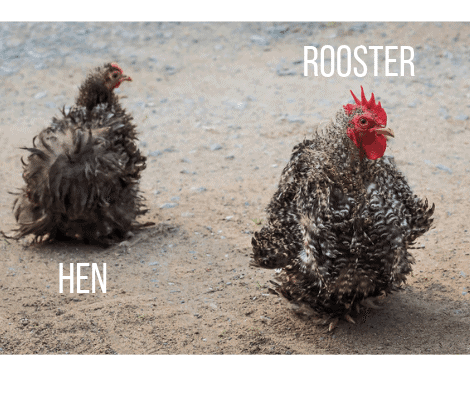
Frizzle Egg Facts
Do Frizzles Lay Eggs?
Yes, frizzle chicken breeds do lay eggs, however, some breeds produce more than others. The number of eggs laid will depend on the breed. For example, Cochin frizzles will produce about 200 eggs a year, while Japanese bantam frizzles will only lay about 75.
What Color Eggs Do Frizzles Lay?
The color is dependent upon the root breed of the Frizzle. Cochins and Buff Orpingtons lay brown eggs, while Silkies lay white eggs. If you have a frizzle Easter Egger, then who knows what color eggs she’ll lay!?
Are Frizzle Chickens Good Egg Layers?
Across the board, the Frizzle chicken breeds are gentle and good layers, though some breeds produce a sizable quantity more than others. Boost your egg laying by providing good quality feed and treats. One of my favorites is Best Eggs Ever Nesting Herbs, you won’t be sorry if you try it.
Can You breed Frizzle to Frizzle?
Technically, you can, but with a one in four chance that it will produce a Frazzle, the practice is discouraged. Frazzles have feathers that are so brittle that they often break off the birds’ bodies and leave unsightly bald spots. This can make them more susceptible to cold in winter.
These Frazzles also suffer a number of other health risks like organ problems. If you’re looking for your Frizzles to enjoy a long healthy life, it is best to breed them to non-Frizzles.
Are Frizzle Chickens Cold Hardy?
While some breeds of the Frizzles are more cold-hardy than others, all Frizzles suffer one drawback. Because their feathers turn upwards, they cannot seal the heat the way feathers generally do. As a result of this, they have a hard time creating an air buffer between their bodies and the outside air.
In colder months and wet weather, pay special attention to their comfort just in case they can’t keep as warm as the other non-Frizzles in your coops.
Where Do frizzle Chickens Come From?
Records of the birds go back as far as the 1600s! Charles Darwin, the famed British evolutionary, made mention of them as being predominantly from India. He called them “Caffie Fowl.”
Officially, there is no record (in English, at least) of where these birds came from, however, all details point to Asia (maybe China or the East Indies).
Are All Frizzles Bantams?
No. At least one breed, Cochins, has varieties that are standard-sized. Generally speaking, though, most Frizzles are bantams.
Is the Frizzle Gene Dominant?
Yes, the frizzle gene is dominant and 50% of the offspring will at least have one frizzle gene and one normal gene. Though the mixture of the flock does not always produce 50% Frizzle feathered chickens and 50% non-Frizzles.
Are Frizzle Roosters and Hens Friendly to Raise?
Yes! While your experience will depend on the individual chicken, most Frizzles are extremely friendly – especially if you give them lots of treats!
What Size Coops Do Frizzle Chickens Need?
Because most Frizzle Chickens are bantams, most advice relating to their homes overlap with rules for bantams. Providing them with perches for them to hang out will help keep them happy and content.
As far as their coop space is concerned, about 1 to 2 square feet per bird is ideal. This is a little more than half as much as a full-sized chicken requires.
Common Chicken Health Issues
- Bumblefoot
- Vent Gleet
- Egg Binding/Vent Prolapse
- Mites/Lice
- Intestinal Parasites
As with any other chicken, Frizzles are not immune to their environments – they are susceptible to lice, mites, worms, and other parasites. To help boost their immune systems and beat the bugs, feed apple cider vinegar and crushed garlic daily. You can learn more about my favorite herbs for deterring mites here.
Where Can You Buy Frizzle Chickens?
One of the biggest problems with ordering your Frizzles is getting them to actually be Frizzles. If you buy day-old chicks in advance, there is no guarantee that they will be Frizzles. A dozen purchased might result in only six being Frizzles. Or you could luck out and find the whole dozen frilled and foofy!
By buying mature, or at least semi-mature birds you are more likely to know if they are actually Frizzles.
5 Best Hatcheries to Buy Frizzle Chickens:
1. Ideal Poultry
Find more information and prices here: Ideal Poultry
Ideal Poultry has been hatching eggs since 1937. As they near their centennial anniversary, they have developed quite a distinctive boasting right: that they are the largest supplier of backyard poultry in the USA! With a headquarters located in Cameron, Texas, Ideal Poultry can fulfill all of your poultry needs through its website, mailing list, and easy-access payment options.
With generations of experience, they have a FAQ page that answers loads of very important questions that a novice chicken owner might have.
Advantages
- Optional Marek’s vaccine for 20¢ per bird (here’s a list of other vaccines your chickens might need, too).
- Discounts range starting at orders of 25 or more.
- Assorted Frizzle Cochin Bantams are a selection of Black, Red, or White Frizzle Cochin Bantams.
- An order of Frizzle chicks will be an assortment of the three varieties of Cochin Bantams.
- Have a minimum dollar value on poultry: $30.
- In the event of a baby chick death during shipping, they will either reship chicks or credit your account.
Disadvantages
- Ship exclusively to the USA.
2. Meyer Hatchery
Find more information and prices here: Meyer Hatchery
Meyer Hatchery is based in Polk, Ohio, and boasts itself as the “Premier Poultry Source.” Priding itself on customer service and availability, Meyer Hatchery provides a variety of chicken breeds to meet customer demands for color and diversity.
They welcome the mixing and matching of breeds of the same poultry type to meet minimum order requirements for safe shipping. To help with orders, they have a calendar of hatchings.
Meyer has a variety of means of communication, including multiple phone numbers, fax, and email. They also run a blog that covers everything from breeds to plant pairing with chickens, feed, cooking recipes, fowl entertainment, and survival tips.
Frizzle chicks are available through August, September, and October.
Advantages
- Discounts start with orders of 25 or more chicks.
- Website is up-to-date in real time.
- Accepts checks and credit cards.
- Optional vaccination.
- Member of the National Poultry Improvement Plan (NPIP), and provide NPIP VS Form 9-3 free of charge.
- Offer orders of over 100 chicks.
Disadvantages
- Limited store hours that change with the season.
3. My Pet Chicken
Find more information and prices here: My Pet Chicken
My Pet Chicken got started in 2005 by Traci Torres and her husband, Derek Sasaki, two novices to the chicken world who had a dream to help other novices in their farmers’ goals. To do this, they put free how-to information on the web and offered some unique products and services.
The website launched in 2005 and in 2006, their flock had grown to the point to where they started offering chicks for sale from their headquarters in Monroe, CT.
The site has been mentioned in other publications and serves tens of millions of page views per year with some of the best customer service. Without a doubt, My Pet Chicken is one of the best hatcheries to buy frizzle chickens.
But wait! Before you order your chicks, make sure you pick up some baby chick starter. You can’t raise chicks without it.
Advantages
- Offers Marek’s vaccinations on all standard chicks at the click of a button.
- Consistent hours of operation.
- A good source for questions about ordering baby chicks, chicken care, and about raising baby chicks.
- Full refund for any bird that has been incorrectly sexed.
- Can ship a minimum of three baby chicks.
Disadvantages
- Limited availability.
- Does not have a storefront.
- There is a 10-chick maximum on this breed.
4. Purely Poultry
Find more information and prices here: Purely Poultry
As a family-owned business, Purely Poultry has some of the best customer service around. They pride themselves on their knowledge of their products, selection, and how-to details related to everything they offer, including ducks, chickens, geese, and lots of other birds!
Located in Durand, WI, they guarantee live birds with every order, which is a good promise, indeed! Frizzle Cochin Bantams come in a variety of colors; Purely Poultry offers chicks in white, black, and red.
And what is a bantam chick you might ask? You can read more here!
Advantages
- Each order backed by live arrival guarantee.
- Discounts start at orders of 25 chicks.
- Small order minimum on chicks.
- Other kinds of poultry offered, too.
Disadvantages
- Relatively expensive.
- Not a huge advantage to buying multiple chicks – discounts are minimal.
5. Welp Hatchery
Find more information and prices here: Welp Hatchery
Located in Bancroft, IA, Welp Hatchery was founded way back in 1929 by Joseph H. Welp. While their specialty is Cornish Rock Broilers, they have diversified to include a wide range of chicken breeds. To simplify their orders, they have a catalog available for viewing or downloading. From its shipping points in Iowa, New Mexico, Minnesota, and Wisconsin, this hatchery truly has a wide reach.
Their Frizzle Cochin Bantams come in three colors: black, red, and white.
Advantages
- Can choose the breeding date on the product page.
- Marek’s immunization is a one-click process.
- Offer free shipping.
Disadvantages
- Minimum orders of 5.
The most important thing is to choose a high-quality hatchery that’s also close to you (if you can) – so your new pets don’t spend forever in the mail.
You might have difficulty finding the colors of Frizzles that match your vision. It might be best to contact a qualified breeder and discuss color possibilities with them.
What Are You Waiting For?
Want to add dazzle to your coop? Then add a Frizzle! (But not a Frazzle!)
Maat van Uitert is a backyard chicken and sustainable living expert. She is also the author of Chickens: Naturally Raising A Sustainable Flock, which was a best seller in it’s Amazon category. Maat has been featured on NBC, CBS, AOL Finance, Community Chickens, the Huffington Post, Chickens magazine, Backyard Poultry, and Countryside Magazine. She lives on her farm in Southeast Missouri with her husband, two children, and about a million chickens and ducks. You can follow Maat on Facebook here and Instagram here.

